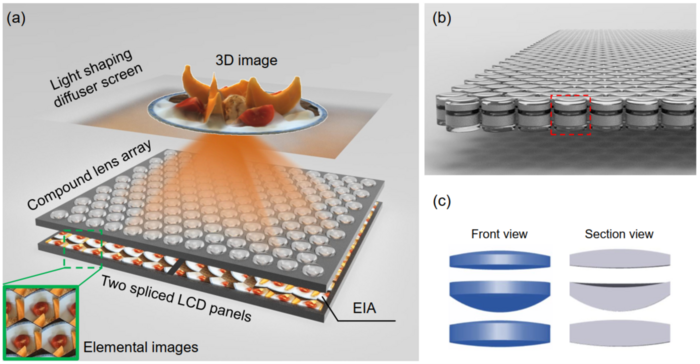Imagine an iPad that can morph and distort, allowing you to draw 3D artwork, write haiku that jump out of the screen, and even touch your partner’s hand from across the ocean.
That is the goal of an engineering team from the University of Colorado Boulder. They’ve constructed a one-of-a-kind shape-shifting display that fits on a card table in a new study. The device is composed of a 10-by-10 grid of soft robotic “muscles” that can detect outside pressure and pop up to form patterns. It’s accurate enough to generate scrolling text and fast enough to shake a fluid-filled science beaker.
It may also provide something even more unusual: a sensation of touch in a digital world.
“As technology advanced, we began sending text over long distances, then audio, and now video,” said Brian Johnson, one of the new study’s two primary authors who will receive his doctorate in mechanical engineering from CU Boulder in 2022. “But we’re still out of touch.”
Johnson and his colleagues published their form display in the journal Nature Communications on July 31.

The group’s idea draws on the work of a team led by Christoph Keplinger, a former assistant professor of mechanical engineering at CU Boulder. Hydraulically Amplified Self-Healing ELectrostatic (HASEL) actuators are what they’re named. The prototype display is not yet market-ready. However, the researchers believe that comparable technology will one day lead to sensory gloves for virtual gaming or a smart conveyer belt that can undulate to separate apples from bananas.
“You could imagine arranging these sensing and actuating cells into any number of different shapes and combinations,” said Mantas Naris, a PhD student in the Paul M. Rady Department of Mechanical Engineering and co-lead author of the work. “There is no limit to what these technologies could eventually lead to.”
RELATED: The Pentagon Is Investing $1.5 Million In A 3D-Printed Hypersonic Rocket Engine
Making music with an accordion
The initiative arose from the search for a new type of technology: synthetic organs.
Researchers lead by Mark Rentschler, professor of mechanical engineering and biomedical engineering, received funding in 2017 to develop sTISSUE—squishy organs that behave and feel like real human body parts but are totally constructed of silicone-like materials.
Keplinger, who is now a director at the Max Planck Institute for Intelligent Systems in Germany, is a co-investigator on the program, as are Nikolaus Correll, an associate professor in the Department of Computer Science at CU Boulder, and Sean Humbert, a professor of mechanical engineering.
“You could use these artificial organs to help develop medical devices or surgical robotic tools for much less cost than using real animal tissue,” said Rentschler, one of the study’s co-authors.
RELATED: Woman Receives 3D-Printed Ear Made From Her Own Cells
However, while developing that technology, the team came up with the notion of a tabletop display. The study is a component of the Materials Science and Engineering Program.
The design of the group is around the size of a Scrabble game board and, like one of those boards, is made up of little squares arranged in a grid. In this scenario, each of the 100 squares represents a separate HASEL actuator. The actuators are comprised of tiny accordions-shaped plastic pouches. When an electric current is passed through them, fluid inside the pouches changes, causing the accordion to expand and bounce up.

The actuators also have soft, magnetic sensors that sense when they are poked. This enables some enjoyable activities, according to Johnson, who is currently a postdoctoral researcher at the Max Planck Institute for Intelligent Systems.
“Because the sensors are magnet-based, we can use a magnetic wand to draw on the surface of the display,” he explains.
Did you hear that?
Similar smart tablets have been built by other research teams, but the CU Boulder display is softer, takes up less space, and is significantly faster. Its robotic muscles can activate up to 50 times each second.
The researchers are currently concentrating on decreasing the actuators in order to boost the display’s resolution—almost like adding more pixels to a computer screen.
“Imagine if you could load an article onto your phone, and it renders as Braille on your screen,” Naris added.
The team is also working on turning the display inside out. Engineers could then create a glove that pokes your fingertips, allowing you to “feel” virtual reality items.
And, as Rentschler pointed out, the display can provide something else: some peace and quiet.
“Our system is, for the most part, silent.” The actuators are almost silent.”
Download The Radiant App To Start Watching!
Web: Watch Now
LGTV™: Download
ROKU™: Download
XBox™: Download
Samsung TV™: Download
Amazon Fire TV™: Download
Android TV™: Download

